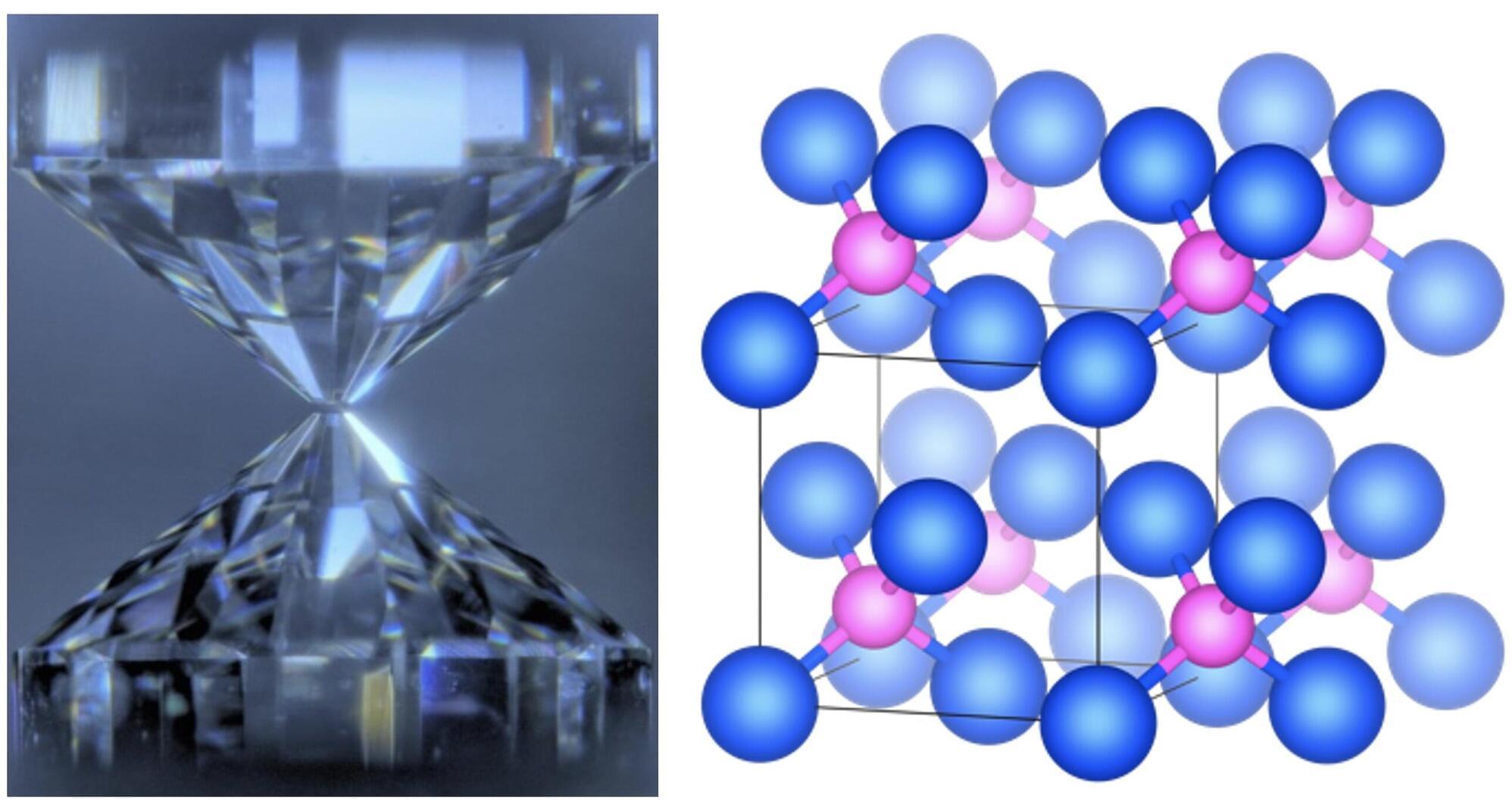Researchers from Japan and Taiwan reveal for the first time that helium, usually considered chemically inert, can bond with iron under high pressures. They used a laser-heated diamond anvil cell to find this, and the discovery suggests there could be huge amounts of helium in the Earth’s core. This could challenge long-standing ideas about the planet’s internal structure and history, and may even reveal details of the nebula our solar system coalesced from.
The research is published in the journal Physical Review Letters.
During a volcanic eruption there are often traces of what is known as primordial helium. That is, helium, which differs from normal helium, or 4 He, so called because it contains two protons and two neutrons and is continuously produced by radioactive decay. Primordial helium, or 3 He, on the other hand, is not formed on Earth and contains two protons and one neutron.
